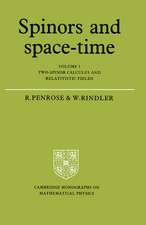Introduction to Matrix Computations: Computer Science and Applied Mathematics
Autor G. W. Stewarten Limba Engleză Hardback – 14 iun 1973
Preț: 728.12 lei
Preț vechi: 997.43 lei
-27% Nou
Puncte Express: 1092
Preț estimativ în valută:
139.33€ • 146.14$ • 115.99£
139.33€ • 146.14$ • 115.99£
Carte tipărită la comandă
Livrare economică 01-15 aprilie
Preluare comenzi: 021 569.72.76
Specificații
ISBN-13: 9780126703504
ISBN-10: 0126703507
Pagini: 441
Dimensiuni: 152 x 229 x 25 mm
Greutate: 0.78 kg
Editura: ELSEVIER SCIENCE
Seria Computer Science and Applied Mathematics
ISBN-10: 0126703507
Pagini: 441
Dimensiuni: 152 x 229 x 25 mm
Greutate: 0.78 kg
Editura: ELSEVIER SCIENCE
Seria Computer Science and Applied Mathematics
Public țintă
Undergraduate and graduate students studying mathematics.Cuprins
Preliminaries. Practicalities. The Direct Solution of Linear Systems. Norms, Limits, and Condition Numbers. The Linear Least Squares Problem. Eigenvalues and Eigenvectors. The QR Algorithm. The Greek Alphabet and Latin Notational Correspondents. Determinants. Rounding-Error Analysis of Solution of Triangular Systems and of Gaussian Elimination. Of Things Not Treated. Bibliography. Index.
Recenzii
"The material presented here bridges the gap between the usual treatment of abstract vector spaces and the matrix theory with which a modern numerical analyst must be familiar in a way that should meet with widespread approval. Few books on numerical analysis have given me as much satisfaction as did this. It has perfect balance in an age where this quality is becoming increasingly rare." --James H. Wilkinson














